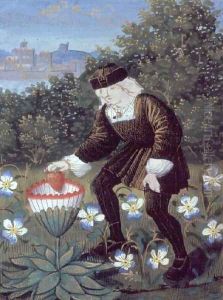Pierre Sala Paintings
Pierre Sala was a French writer, poet, and manuscript collector born in Lyon in 1457. Not widely known as a visual artist, his contributions to the arts are primarily through his writings and the compilation of manuscripts during the French Renaissance. His work is often cited in the context of the history of French literature rather than in art history. Sala served in the court of King Louis XII and later under Francis I, and he was involved in diplomatic missions and municipal administration in his hometown of Lyon.
Sala's most famous literary work is 'Le Petit Livre d'Amour' (The Little Book of Love), also known as 'Emblèmes et Devises d'Amour' (Emblems and Devices of Love). This manuscript was a personal gift to his future wife, Marguerite Bullioud, and it is notable for its integration of text and illumination, combining poetry with emblematic illustrations. However, these illustrations were not by Sala himself but were commissioned to artists of his time. The book is an exemplary piece of the courtly love tradition and provides insight into the cultural practices and values of the French Renaissance elite.
Aside from his literary contributions, Pierre Sala was also known for his collection and preservation of manuscripts, which would have been significant in a time before the widespread use of the printing press. His efforts helped to foster the intellectual and cultural environment in Lyon, which was becoming a hub for humanist scholars and writers.
Sala died in 1529 in Lyon. While he did not leave behind a legacy as an artist in the traditional sense, his work as a writer and collector has been important to the study of French literature and the intellectual history of the Renaissance period.
